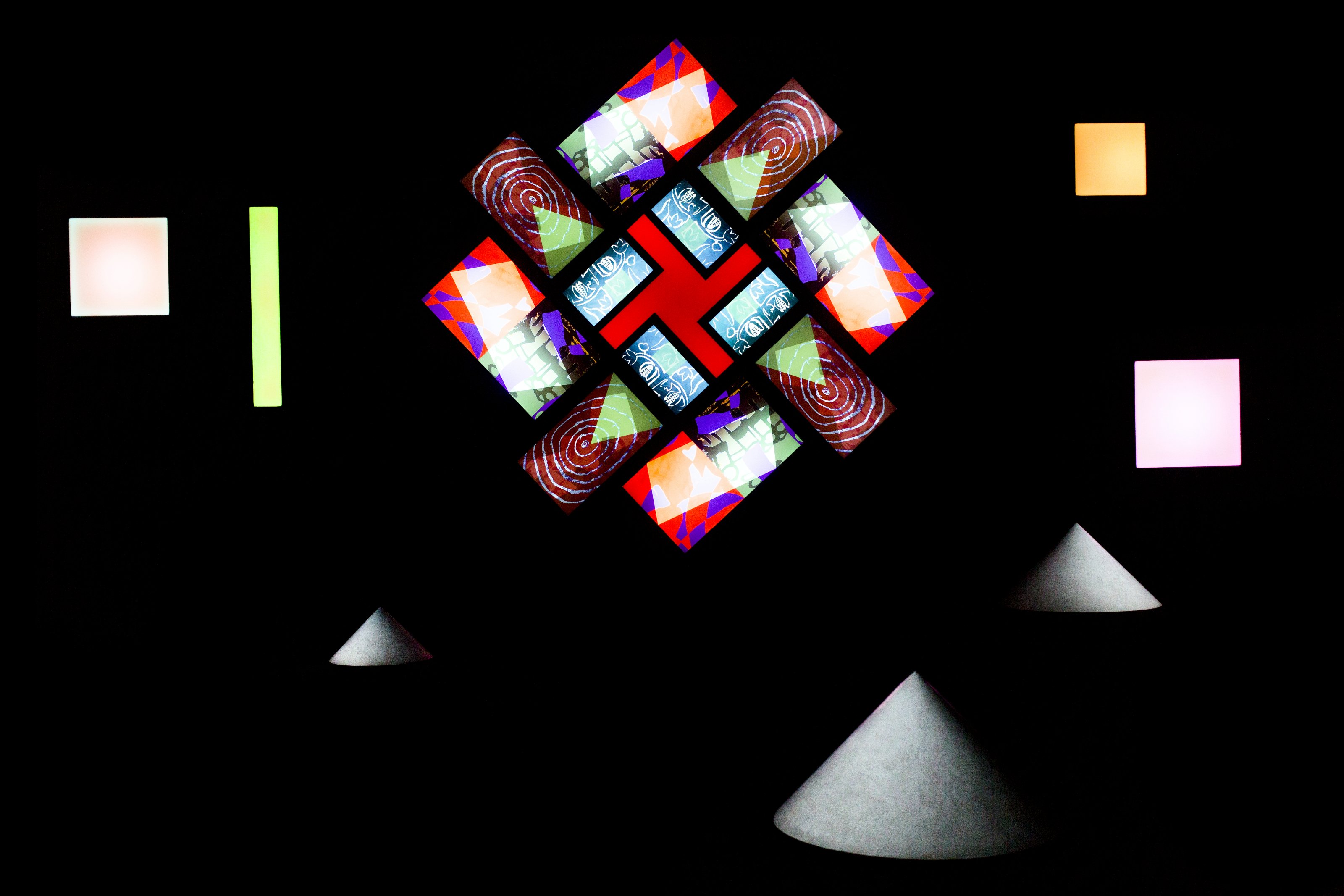Meet the Visual Artists Featured at RBMA Montréal 2016
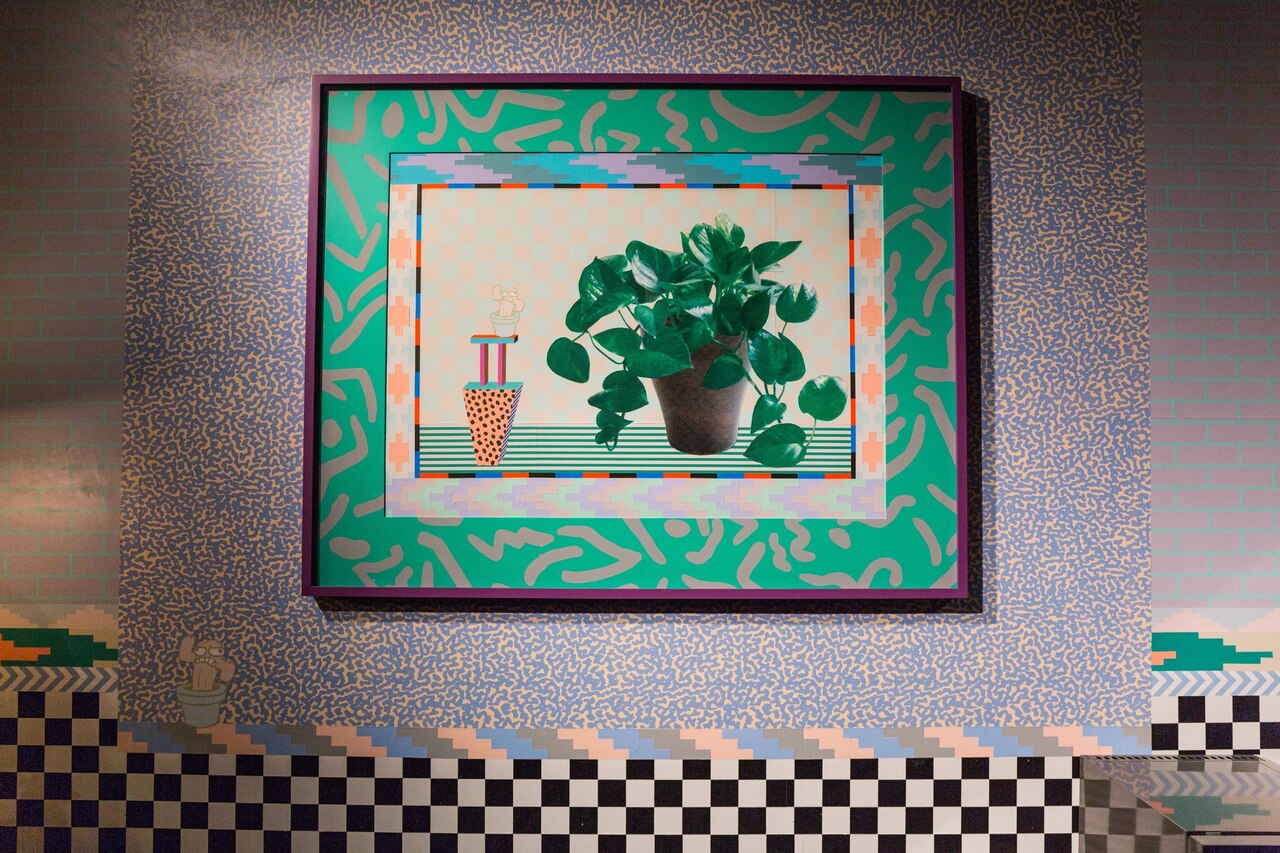
As part of the 2016 Red Bull Music Academy, we’ve collaborated with Trusst, the curatorial team of Melissa Matos and Emmanuel Mauriés-Rinfret, to present a show of works by new and established Montréal artists throughout the Academy’s time at Phi Centre. The exhibition weaves through four floors of bedroom studios and communal spaces, which have been created for the Academy by architectural firm Z P + A. Trusst is a multifaceted creative studio whose activities range from curating exhibitions to creating films, objects and books. Trusst also has a long-standing partnership with Montréal DJ and producer Jacques Greene, providing visuals and stage direction for his incendiary live shows.
The participating artists in the Red Bull Music Academy exhibition provide a unique window into the creativity flourishing in this part of Canada, from digital innovations and street art to sculptural explorations of forms found in nature. Ranging from traditional painting to video, 3D animation, sound and kinetic works, each artist pushes through the boundaries of traditional genres and material specificity through experimentation with unconventional mediums.
Adam Basanta // Béchard Hudon //
Celia Perrin Sidarous // Daniel Langevin // Dominique Pétrin // Dominique Sirois //
Élisabeth Picard // Elmyna Bouchard // Étienne Chartrand //
Ingrid Tremblay // Jaime Angelopoulos // Jérôme Nadeau //
Jérôme Ruby // Josée Pedneault // Luc Paradis //
Mathieu Connery & Laurie Cotton Pigeon // Nik Mirus // Paul Hardy // Sabrina Ratté //
Simone Blain // Timothée Messeiller // Tyson Parks
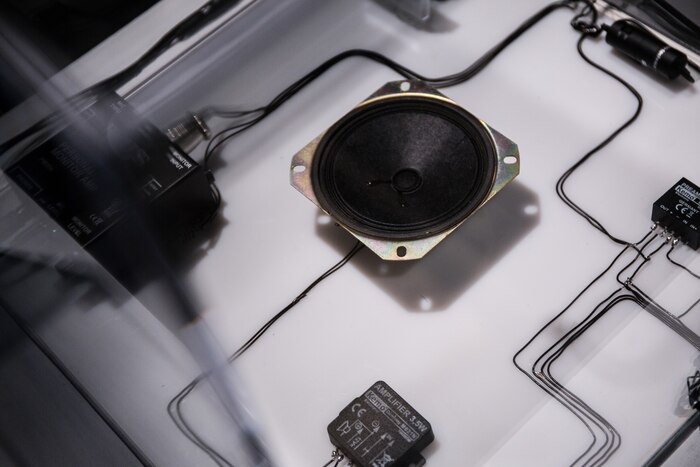
Adam Basanta
Adam Basanta is a Montréal-based sound artist, composer and performer of experimental music. His work traverses sound installations, electronic and instrumental composition, site-specific interventions and laptop performance. Across disciplines and media, he interrogates intersections between conceptual and sensorial dimensions of listening, instabilities of instrumentality and the intertwining of human behaviour and technological devices.
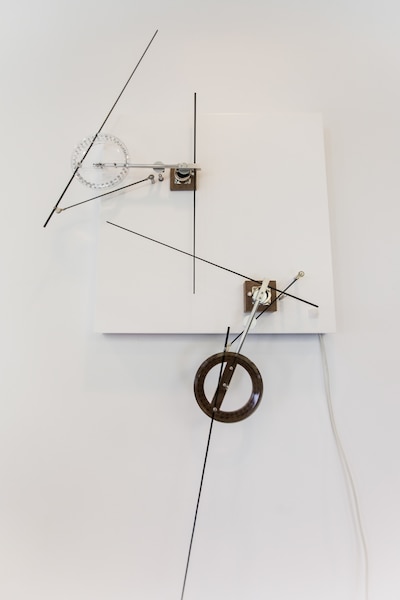
Béchard Hudon
Catherine Béchard was born in 1962 in Sept-Îles, Québec. Sabin Hudon was born in 1964 in Lesage, Québec. They live and work in Montréal and have worked as an artistic duo since 1999. Their work is based on multiple parameters: sight and hearing, materiality and its resonance, time and space, movement and immobility, sound, silence and listening. They are also interested in sounds generated by acoustic sources, their spread and the impressions they provoke and the silences between things that make up our perceptions. Their approach is developed via various aesthetics that can merge in a single project: sound sculpture, kinetic and sound installation, sound art and performance and public art.
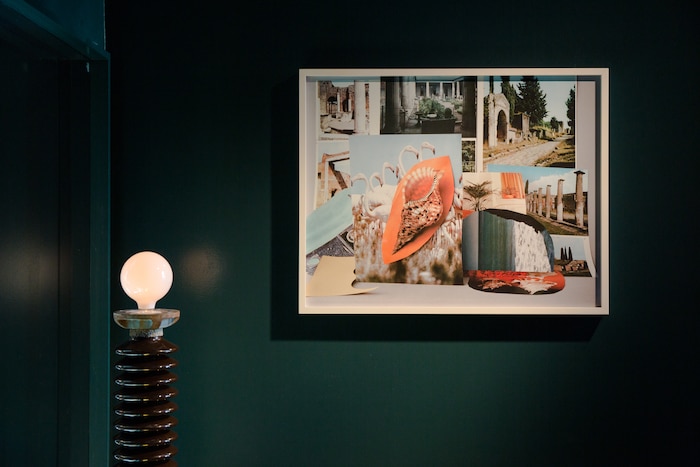
Celia Perrin Sidarous
Celia Perrin Sidarous presents assemblages and carefully curated arrangements, following a logic that is at once internal and associative. Her photographs offer a considered way of looking at collected objects within the visual rhetoric of the studio. Referencing histories of still life, interior arrangement and the placement of objects for display and exhibition, her photographs nonetheless throw into confusion the conditions through which everyday objects are interpreted and the ways we navigate the material world.
Daniel Langevin
Born in 1974, Daniel Langevin lives and works in Montréal. In 1999, he obtained a BFA at Université du Québec à Montréal. He favors abstract painting as a medium, since it allows him to constantly reinvent his own notion of balance. Through his work, he schematizes visual systems in order to give a personal and refined interpretation. Color, which he uses as a material in its own right, is the scaffold that supports his pieces: from intense saturation to the most delicate shimmering shades. With their simple and definite architecture, the elements of his compositions question the notion of a painting’s structure by bringing to light the precariousness of its frame through various visual strategies.
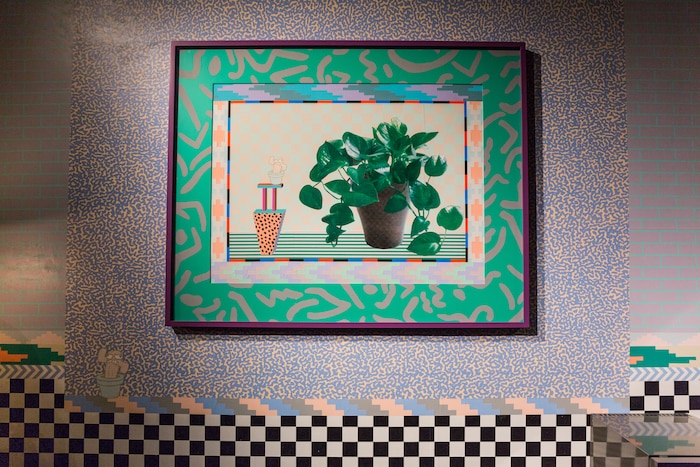
Dominique Pétrin
Dominique Pétrin is interested in methods of altering perception and consciousness. Whether by circumventing vision’s cognitive processes or through the use of hypnosis in performances, her work bridges imagination and hallucinations. The spaces she creates are built around optical illusions that stimulate the observer’s vision by playing with colors and jarring patterns. Pétrin is a self-taught artist from Montréal.
Dominique Sirois
Dominique Sirois lives and works in Montréal. Her practice takes the form of installation involving an interplay of sculptures, videos, sounds and prints. Sirois’ work deals with three fields of interest: value and surveillance; economy; and ruins and obsolescence. Her artistic process unfolds by creating analogies and associations between forms and phenomenons, her installations playing with a network of references between the different artworks.

Élisabeth Picard
Montréal-based artist Élisabeth Picard has a sculptural practice that investigates the structures brought about by nature’s growth and transformation processes. Picard’s approach, which is informed by design and architecture, puts forth an analogous and personal method of creating sculptures and installations through the use of new technologies. She focuses on the transformation of Ty-Rap fasteners, which are dyed, diverted and dislocated in a search for poetic refinement. She imposes traditional textile and basket-making techniques upon the fasteners to generate contrasts with the raw appearance. Her assemblages take various shapes, such as organisms, landscapes and architectural structures, highlighting notions of accumulation, texture and translucency via LEDs. She works innovatively with common materials, creating complex structures that evoke fantastic and almost hyperrealistic elements of nature.
Elmyna Bouchard
Elmyna Bouchard was born in 1965 in Saguenay-Lac-Saint-Jean, Québec, Canada. Having studied printmaking at the Centre Sagamie in Alma, she relocated to Montréal in the early 1990s and has been working as a printmaker and engraver ever since. In 2003, she was awarded the Prix de la Fondation Monique et Robert Parizeau, given to an emerging Québec artist who has made a significant contribution to the field of printmaking. For over 20 years, she has explored art on paper, developing a variety of techniques that often draw on the principles of engraving. Since 2011, she has used the stamping technique both as constraint and dynamic element in a drawing practice.
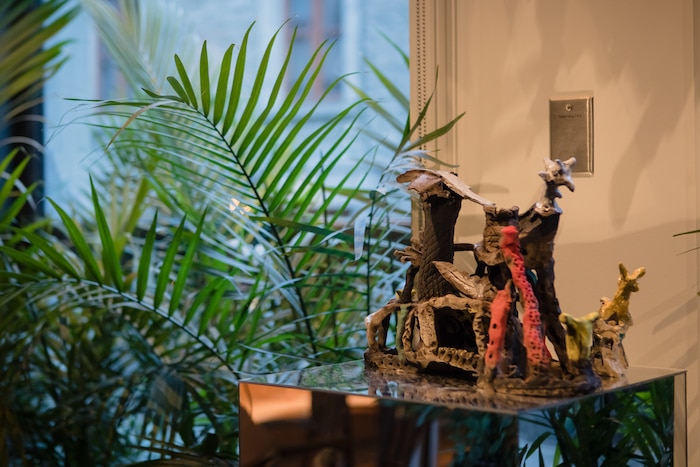
Étienne Chartrand
Étienne Chartrand’s approach to painting is in opposition to peak Renaissance aesthetics, with pictorial work that reflects the metaphysical stakes of the act of painting itself. Objects and creatures come to life in Chartrand’s mythology-building spaces, painted or otherwise, with ceramics work that freezes time and installations that aspire to reflect a parallel reality. Chartrand, who studied Graphic Design at Université du Québec à Montréal and completed his MFA in Painting and Drawing at Concordia University, draws inspirations from popular culture, abstract expressionism and automatism.
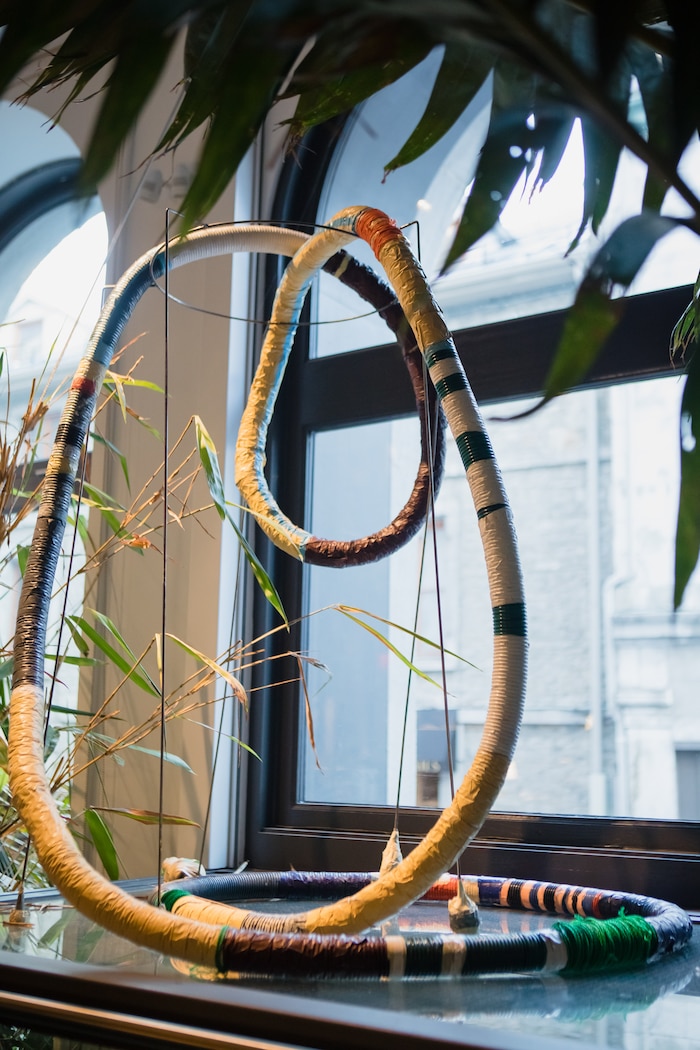
Ingrid Tremblay
Ingrid Tremblay is a Montréal and Austin-based artist who works within a variety of media, including painting, sculpture and installation. Inspired by her background in speech-language pathology, Tremblay’s research focuses on the relationship between humans and their environment, particularly with the added influences of language, material culture and the sciences. Her practice is deeply invested in questions surrounding the notion of objects, the conceptualization of the environment by the process of language, and how the materials and oppositions can interact within a composition.
Jaime Angelopoulos
Jaime Angelopoulos’s work emphasizes the materiality of sculpture, giving prominence to the raw substance with which the artist interacts. The viewer is confronted with her unique treatment of vibrant colors, textures and contortions, as well as a spontaneity of gesture that is contradictory to the rigid nature of her medium. At first glance, the imagined forms appear to be completely abstract, but upon further inspection, subtle allusions to the human body become apparent. Traditional notions of media are thus rethought, as are conventional distinctions between subject and object. Angelopoulos also produces works on paper, in many ways complementing her sculptural practice.
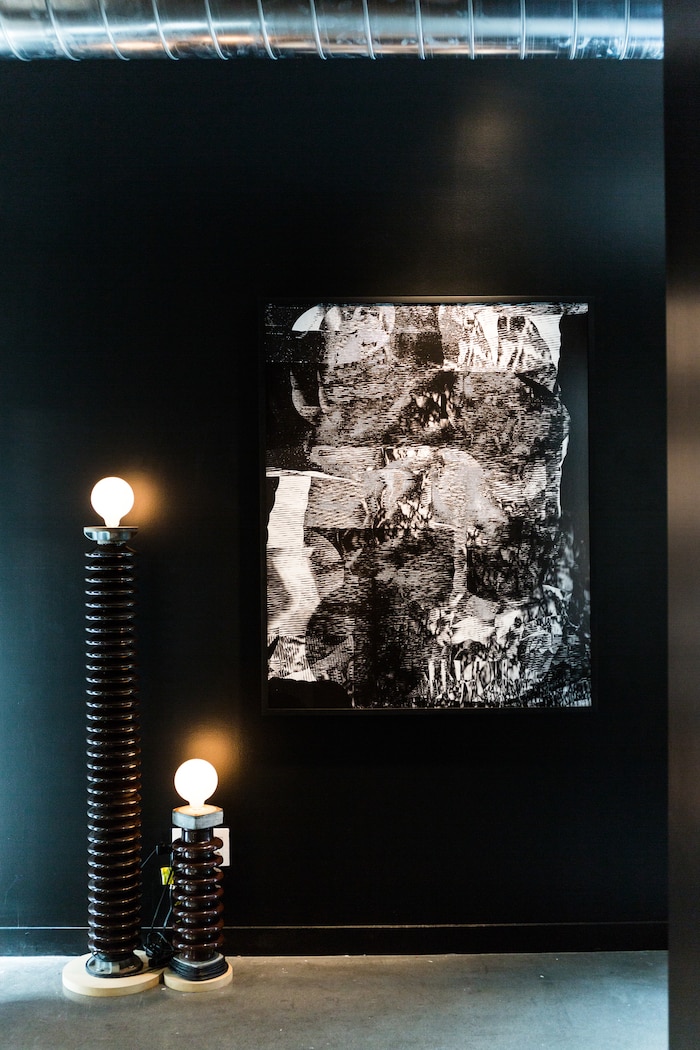
Jérôme Nadeau
Jérôme Nadeau’s work navigates the boundaries and expectations that we have towards images. Interested in disrupting their conventions and moving beyond their usually accepted meanings, his work offers a reflection on the status of the image in relation to its materiality and the inherent qualities situated at the intersection of different mediums. Nadeau’s transformative methods investigate typically unseen production processes while exploring the sensibilities beyond the material’s predetermined use. Through a cryptic and calculated assemblage of his images, Nadeau forces the spectator to question the history contained within the works themselves.
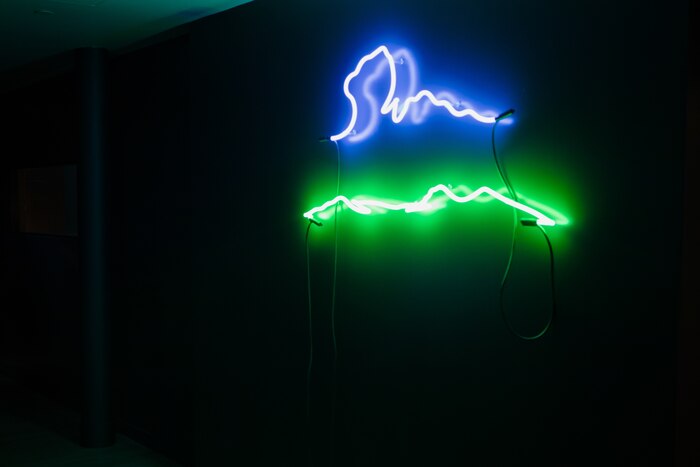
Jérôme Ruby
Jérôme Ruby was born in 1971 in France and has lived and worked in Montréal since 2003. He works principally in drawing and sculpture, with installations that play with codes of visual representation. Ruby’s work dialogues with the contemporary landscape, from the predominance of the economy and the burden of history and the sacred, to aesthetic trends and the manufacture and manipulation of conceptual foundations.
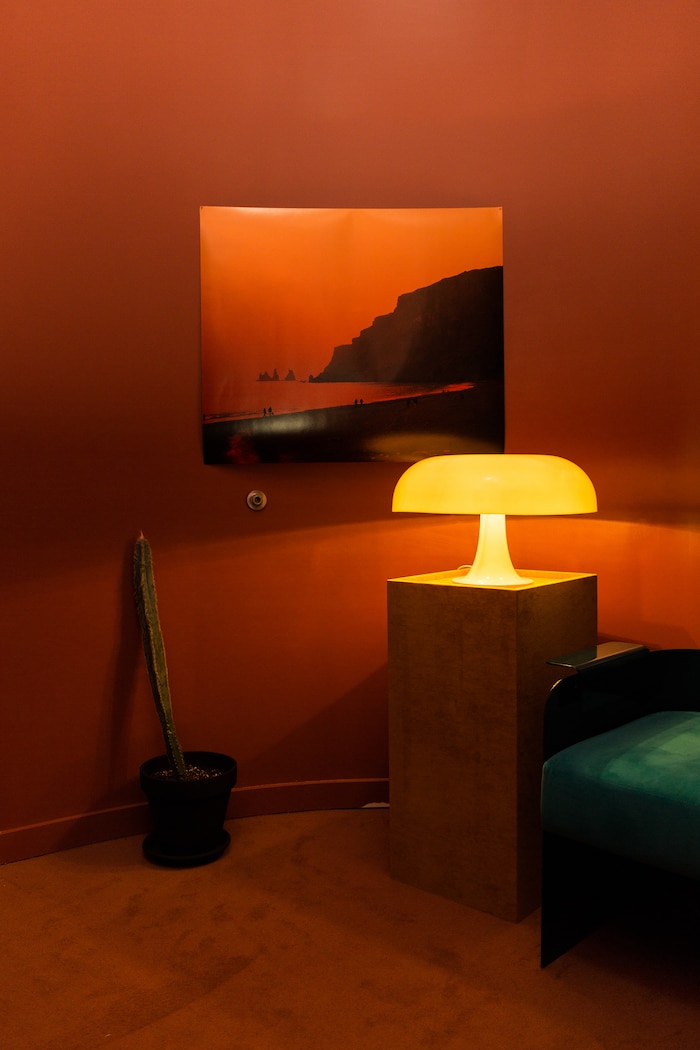
Josée Pedneault
Josée Pedneault is a Montréal-based Canadian artist working with photography and mixed media. Her recent projects explore the themes of destiny, chance and existential quests through mechanisms informed by geography, science and popular opinion. She explores the delicate structure of connections that exists between the world and herself – allowing for the unexpected to manifest itself by facing the unknown, often while travelling.

Luc Paradis
Luc Paradis is a Montréal-based multidisciplinary artist working primarily in painting, sculpture and drawing. With a process anchored in studio experimentation, Paradis often uses color and shape as starting points for intuitive production modes. Works are conceived as autonomous entities that are rendered coherent through a distinct artistic process grounded in composition, technique and the use of color. Paradis’ approach to art-making incorporates an in-depth exploration of materials, as well as a degree of freedom from theoretical confines. While Paradis does not explicitly reference the avant-garde in his work, this influence is discernable when considering histories of minimalism and abstraction. His interests in design, music and theatre have cross-cultivated his visual art practice, allowing Paradis to explore themes of sexuality, the grotesque and the macabre in ways that are often unexpected.
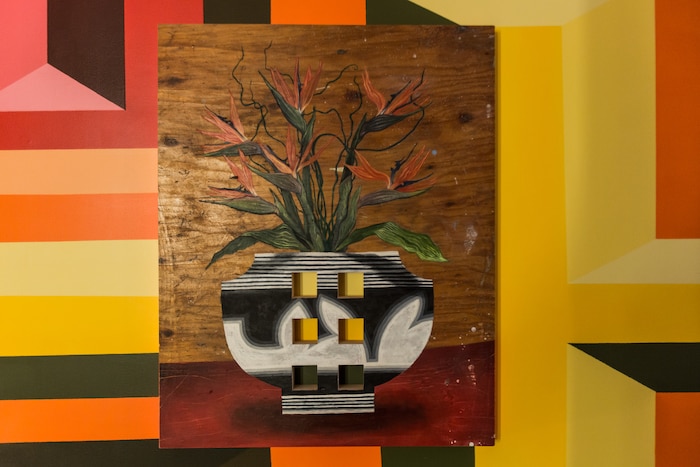
Mathieu Connery & Laurie Cotton Pigeon
Mathieu Connery has been making urban paintings for more than ten years, using the original surface of the wall as a background to integrate his works. In the spirit of his latest works, Connery is collaborating with Laurie Cotton Pigeon for a series of floral paintings with various cut-out window patterns. Pigeon is a Montréal-based artist who for the past six years has worked primarily in paintings and drawings, only recently discovering and working through performance. She articulates her art by drawing on the way she experiences nature, through shamanism and horticulture. In doing so, she is developing a unique symbolic and folkloric language. Her personal mandate is to engage with the viewer and create an emotional response that can eventually bring reflection and transformation.
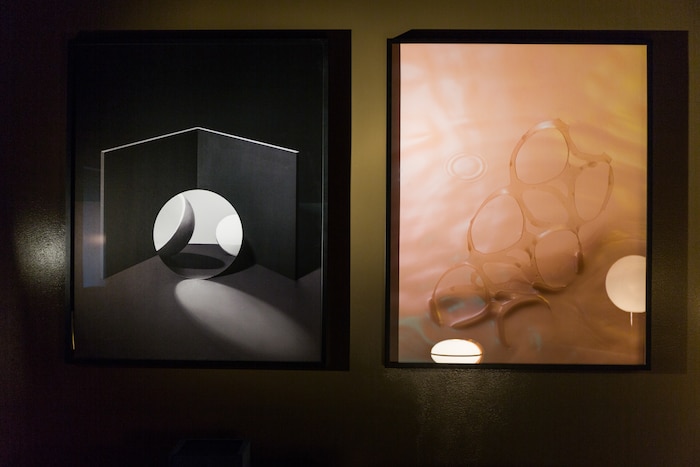
Nik Mirus
Nik Mirus is a Canadian still life and conceptual photographer based in Montréal. His work has been widely exhibited and he is a two-time winner of the Magenta Foundation’s Flash Forward Competition, an annual compen- dium showcasing the very best of emerging photographers from Canada, the UK and the United States. As a founding member of Made of Stills, he has been actively involved in the thriving Montréal photography community. Mirus’ understanding of an object’s essence, paired with his acute sensibility toward light and composition, make for a stimulating new force in the world of still-life photography. His ability to translate concepts into compelling images has made him a highly sought-after talent for publications such as Wired and The Walrus.
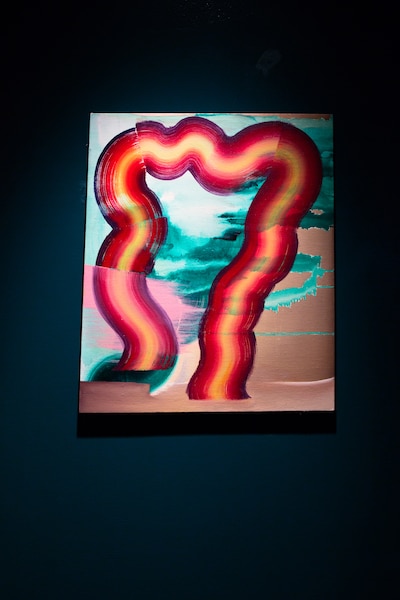
Paul Hardy
Paul Hardy’s ambiguous and abstracted paintings are characterized by relentless material explorations, an exhaustive process of undoings and renewals which demonstrate an eclectic relationship to tradition. The artist’s subjectivity appears through different physical sites of investigation where the personal and art historical collide.
Sabrina Ratté
Sabrina Ratté is a Montréal-based video artist. Her work investigates the creation of virtual environments generated by analog technologies. Electricity, as raw material, is sculpted, transformed and altered digitally to be reborn as luminous and vibrating architectures. Her work exists on the edge of science fiction, between abstraction and figuration, utopia and dystopia, architecture and landscape.
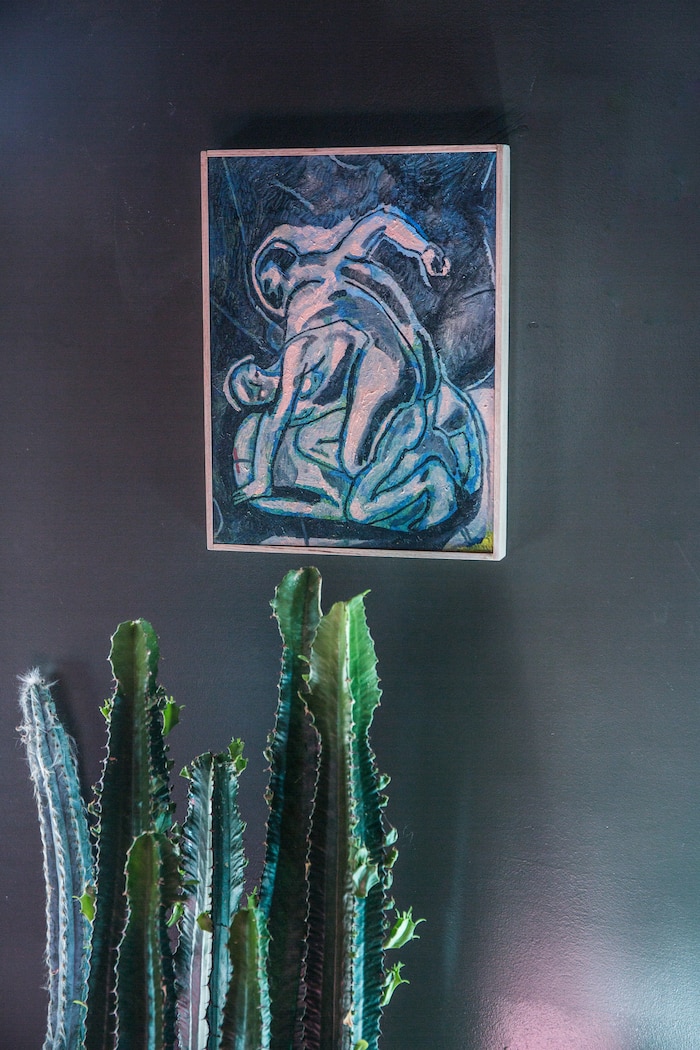
Simone Blain
Simone Blain was born in Fredericton, New Brunswick in 1990. She currently lives and works in Montréal and holds a BFA in Painting and Drawing from Concordia University. Blain makes things that are in an awkward transitory state, tipping between sensitivity and absurdity. Interested in emergent connections that occur between seemingly arbitrary images, she uses comparison to talk about the human connection and our relationship to technology and communication.

Timothée Messeiller
Timothée Messeiller was born in 1988 in Vevey, Switzerland. He now works and lives in Montréal. Messeiller’s work can be situated at the intersection of applied design and art, raising the question of the perception/reception of an art work and the possible interaction between public and object. He examines to what degree free initiative is allowed on the part of the viewer, revealing how a presentation space can be reconsidered as a zone of memorial activation, freed from any artistic or social reproduction. Using multiple media formats to create installations, his work tends to question the status of the artist as a craftsman and examines the social echoes of this underlying concept.
Tyson Parks
Tyson Parks is a Los Angeles and Montréal-based artist who makes work in a wide range of media, including sound, video, sculpture, 3D animation, interactive installation and the internet. Parks’ work explores the relation- ships between people and technology, and is an ongoing exploration of how perception affects human understanding in a technology-saturated world. Parks is interested in utilizing new technologies to create poetic fusions of otherwise disparate realities. The complicated relationships that arise from his showcasing of fused and forced realities serve as parables for how we relate to the world and to one another.

